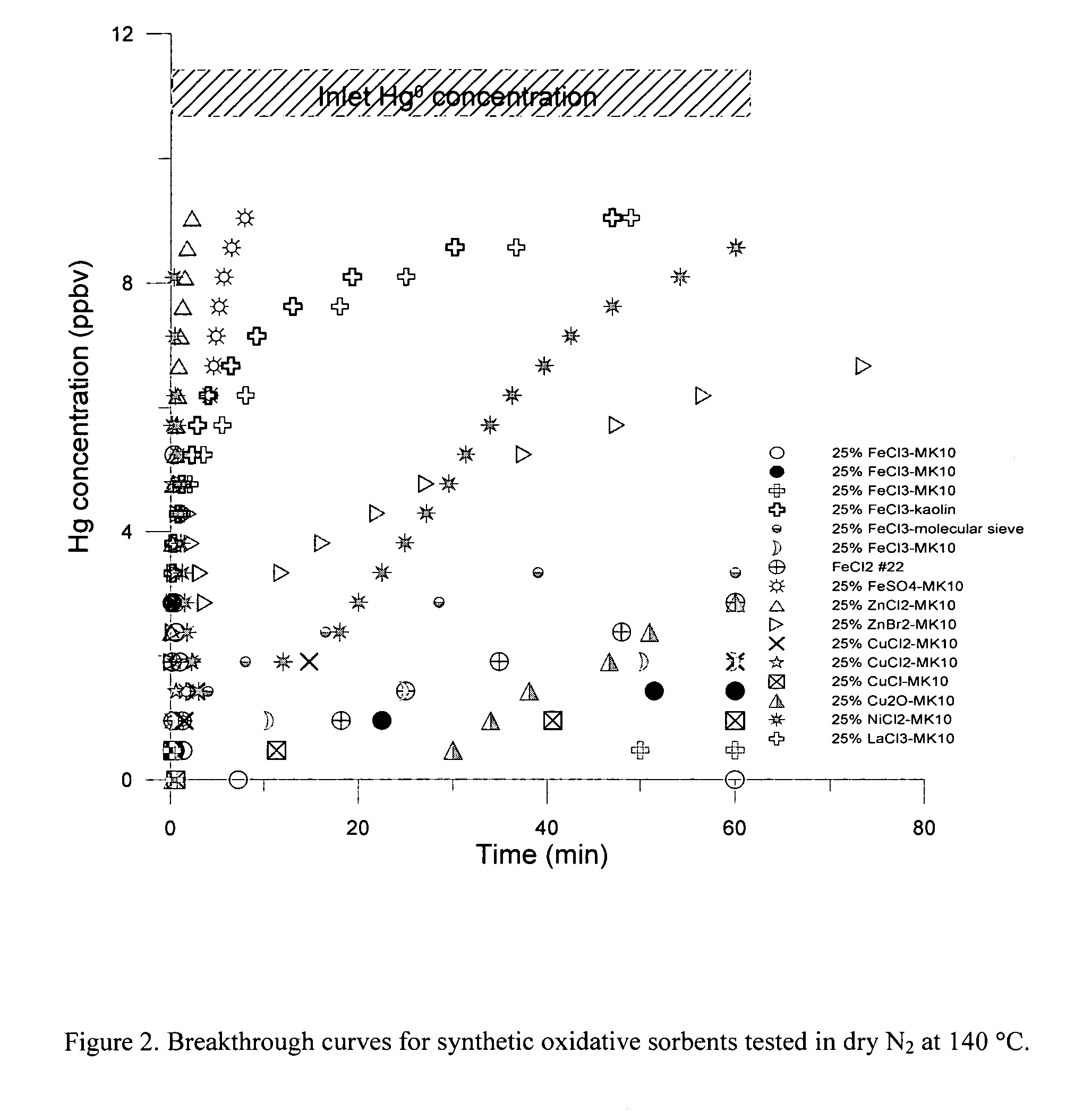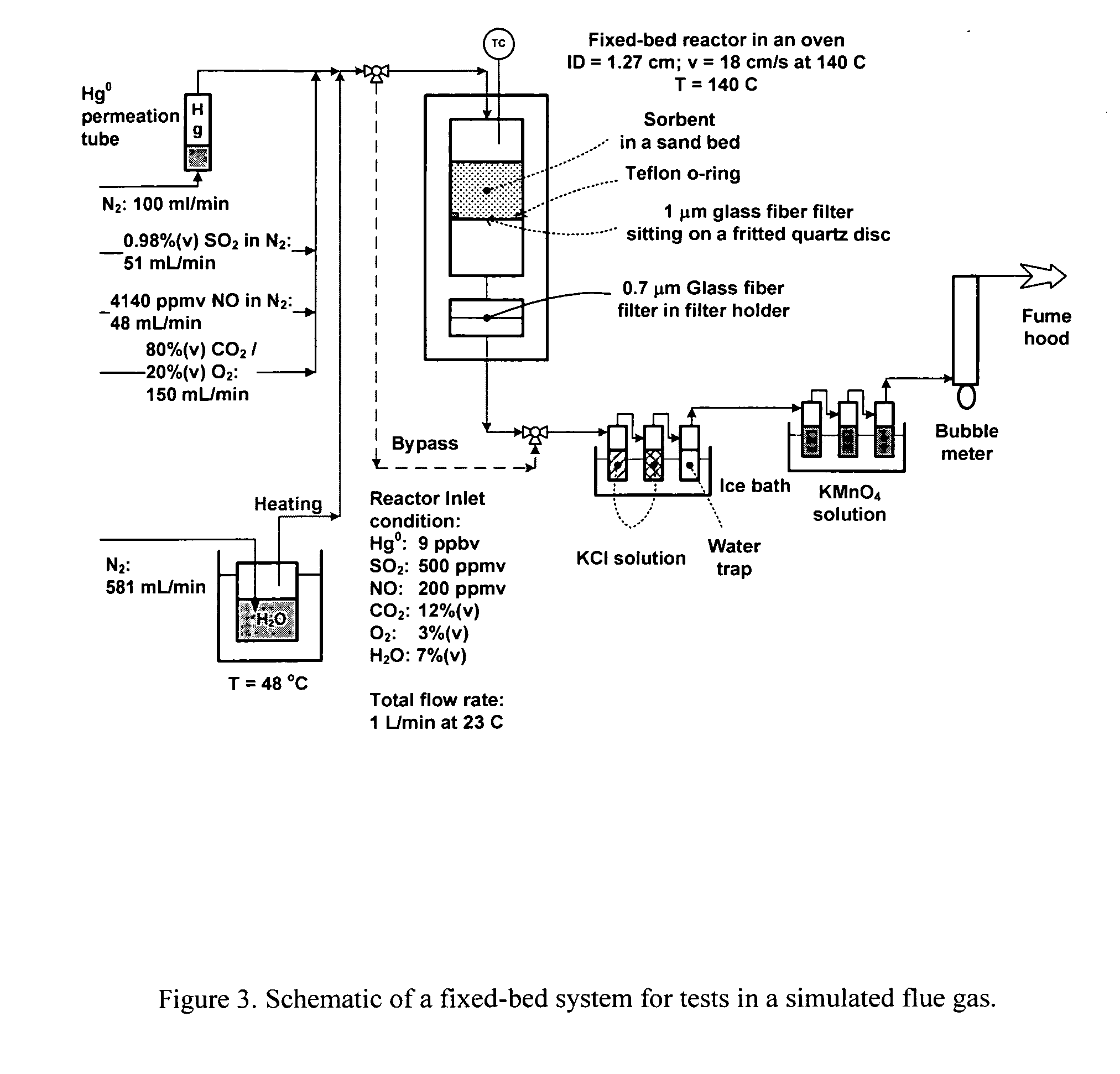Compositions and methods for removing mercury from mercury-containing fluids
- Summary
- Abstract
- Description
- Claims
- Application Information
AI Technical Summary
Benefits of technology
Problems solved by technology
Method used
Image
Examples
Embodiment Construction
[0023] The present invention is concerned with an oxidative sorbent composition, a method of making an oxidative sorbent composition, and a method of using the oxidative sorbent composition for the substantial removal of mercury from a mercury-containing fluid.
[0024] In accordance with a first embodiment of the present invention, a novel oxidative sorbent composition suitable for removing mercury from mercury-containing fluids is provided. As used herein, the term “fluid” denotes gas, liquid, vapor, and combinations thereof. Coal-fired flue gas is one such gas. The oxidative sorbent composition generally comprises one or more silicates capable of cation exchange with active metal cations, a plurality of active metal cations presenting at the material surface, and a plurality of counter anions. The oxidative sorbent composition may further comprise activated carbon.
[0025] As used herein, the one or more silicates may be a natural or synthetic silicate selected from the group consis...
PUM
| Property | Measurement | Unit |
|---|---|---|
| Temperature | aaaaa | aaaaa |
| Fraction | aaaaa | aaaaa |
| Fraction | aaaaa | aaaaa |
Abstract
Description
Claims
Application Information
 Login to View More
Login to View More - R&D
- Intellectual Property
- Life Sciences
- Materials
- Tech Scout
- Unparalleled Data Quality
- Higher Quality Content
- 60% Fewer Hallucinations
Browse by: Latest US Patents, China's latest patents, Technical Efficacy Thesaurus, Application Domain, Technology Topic, Popular Technical Reports.
© 2025 PatSnap. All rights reserved.Legal|Privacy policy|Modern Slavery Act Transparency Statement|Sitemap|About US| Contact US: help@patsnap.com



